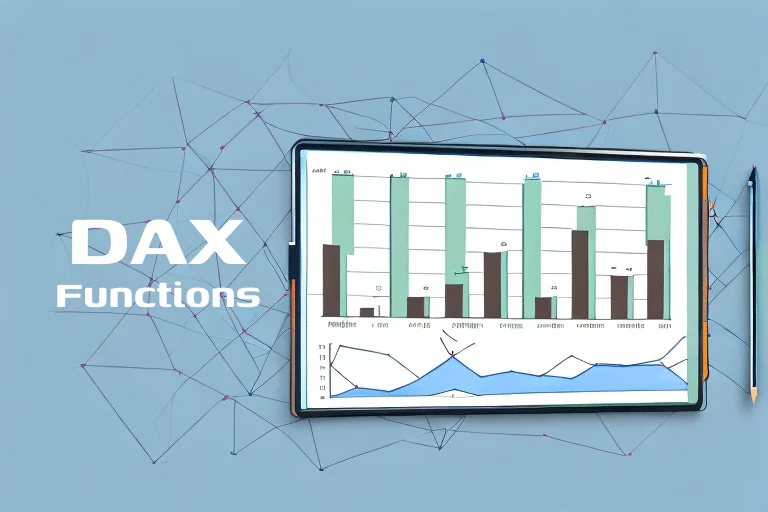
DAX Functions
Detailed information about some of the important DAX - Time Intelligence Functions
Introduction to DAX:
DAX refers to Data Analysis Expression is a programming language used in Power BI to create Measures, Calculated Columns and custom tables. It is a combination of functions, constants, operators etc., that can be used in formulas and expressions to generate the required output values.
There are several categories in the DAX Functions such as :
-
Mathematical Functions
-
Statistical Functions
-
Text Functions
-
Logical Functions
-
Informational Functions
-
Time Intelligence Functions and Others
In this blog we will be covering some of the important Time Intelligence Functions:
1. TOTALMTD
TOTALMTD function is a DAX expression that is used to calculate cumulative total over the specified to Month of the given data to last date.
Here’s the syntax for the TOTALMTD function:
TOTALMTD(<expression>,<dates>,[<filter>])Parameters:
-
<expression>: This is the expression that you want to aggregate over time. -
<dates>: This is the column containing the dates for which you want to calculate the cumulative total. -
[<filter>](optional): This is an optional argument that allows you to apply additional filters to the calculation.
Example Syntax :
Total Revenue MTD = TOTALMTD(SUM(Sales[Revenue]), Sales[Date])2. TOTALQTD
TOTALQTD function is a DAX expression that is used to calculate cumulative total over the specified to QUARTER of the given data to last date.
Here’s the syntax for the TOTALQTD function:
TOTALQTD(<expression>,<dates>,[<filter>])Parameters:
-
<expression>: This is the expression that you want to aggregate over time. -
<dates>: This is the column containing the dates for which you want to calculate the cumulative total. -
[<filter>](optional): This is an optional argument that allows you to apply additional filters to the calculation.
Example Syntax :
Total Revenue QTD = TOTALQTD(SUM(Sales[Revenue]), Sales[Date])3. TOTALYTD
TOTALYTD function is a DAX expression that is used to calculate cumulative total over the specified to YEAR of the given data to last date.
Here’s the syntax for the TOTALYTD function:
TOTALYTD(<expression>,<dates>,[<filter>])Parameters:
-
<expression>: This is the expression that you want to aggregate over time. -
<dates>: This is the column containing the dates for which you want to calculate the cumulative total. -
[<filter>](optional): This is an optional argument that allows you to apply additional filters to the calculation.
Example Syntax :
Total Revenue YTD = TOTALYTD(SUM(Sales[Revenue]), Sales[Date])4. SAMEPERIODLASTYEAR
SAMEPERIODLASTYEAR function is a DAX expression that is used to retrieve the dates of the last year. This function is useful for calculating year-to-year growth.
Here’s the syntax for the SAMEPERIODLASTYEAR function:
SAMEPERIODLASTYEAR(<dates>)Parameters:
<dates>: This is the column or table that contains the dates for which you want to get the corresponding dates in the previous year.
Example Syntax :
Total Revenue This Year = SUM(Sales[Revenue])
Total Revenue Last Year =
CALCULATE(
SUM(Sales[Revenue]),
SAMEPERIODLASTYEAR(Sales[Date])
)5. DATESINPERIOD
DATESINPERIOD function is a DAX expression that is used to generate the table of specific date period.
Here is the syntax for the DATESINPERIOD function:
DATESINPERIOD(<dates>, <start date>, <number of intervals>, <interval>)Parameters:
<dates>: This is the column or table that contains the dates you want to use as a starting point.
<start_date>: This is the starting date for the period.
<number_of_intervals>: This is the number of intervals you want to include in the table.
<interval>: This is the type of interval you want to use, such as “day,” “month,” “quarter,” or “year.”
Example Syntax :
Last30Days = DATESINPERIOD('YourTable'[Date], TODAY(), -30, DAY)In conclusion, this blog post provides an introduction to Data Analysis Expressions (DAX), a powerful programming language used in Power BI for creating measures, calculated columns, and custom tables. DAX encompasses various categories of functions, including mathematical, statistical, text, logical, informational, and time intelligence functions. The focus of this post is on essential time intelligence functions, such as TOTALMTD, TOTALQTD, TOTALYTD, SAMEPERIODLASTYEAR, and DATESINPERIOD.